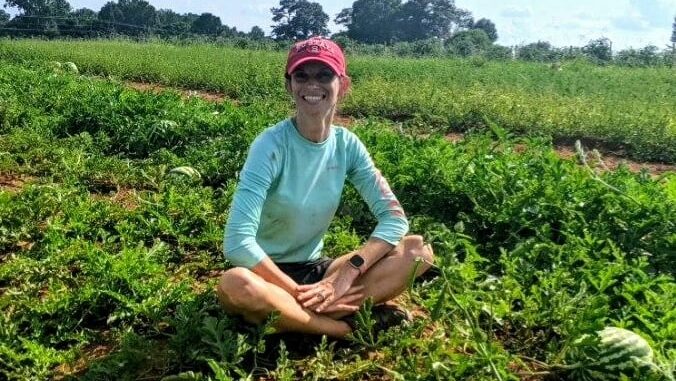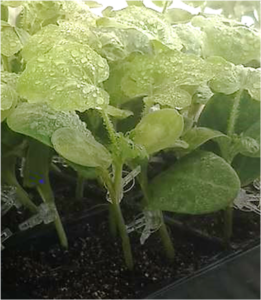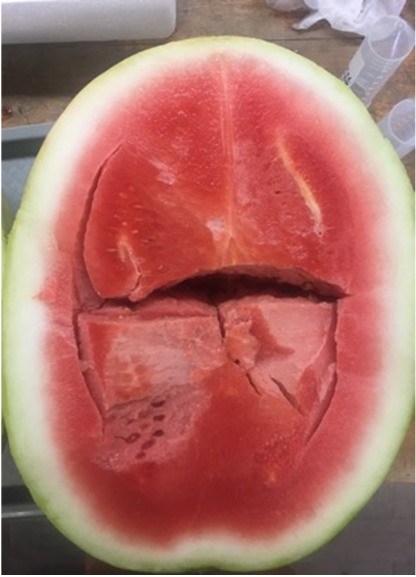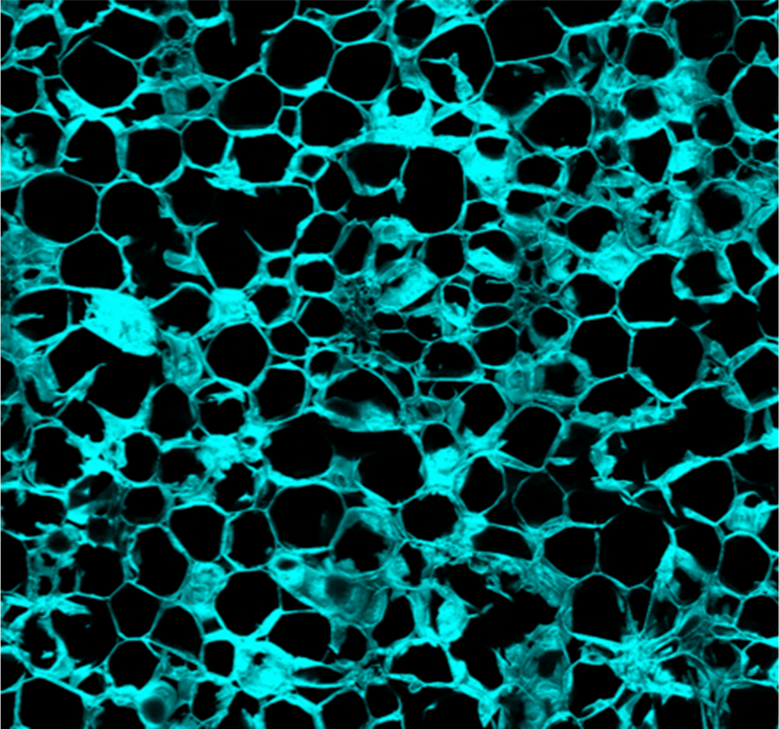Grafting watermelon to combat hollow heart

Few will argue that the watermelon heart is the sweetest, most desired bite. But have you ever cut into a watermelon that had what appeared to be a significant crack through the middle, a “hollow heart,” as it’s called? Obviously, this defect that can occur in watermelon may be disappointing to the one seeking a refreshing snack on a hot summer day, but it’s even more disheartening to a farmer whose load of watermelon can be rejected by a produce buyer if too many fruit are present with hollow heart. Drs. Penelope Perkins-Veazie and Marlee Trandel-Hayse, at NC State University’s Plants for Human Health Institute, took a closer look at hollow heart and whether grafting offered an innovative horticultural solution.
Grafting is a fairly common horticultural practice in fruit trees and ornamentals. Typically it is reserved for high value crops or to overcome an environmental challenge, but it is recognized as a valuable tool for sharing desirable traits from the rootstock (the base plant) across the graft union to the scion (the top or grafted plant). The traits a rootstock may confer include disease resistance, stress tolerance, or vigorous (or stunted) growth. Grafting has been used on cucurbits (cucumber, melon and watermelon) for hundreds of years, primarily in Asia. As a PhD student, Trandel-Hayse investigated the scion-rootstock interaction that resulted in fewer incidences of hollow heart in grafted watermelon.

Hollow heart arises from a lack of cell growth and expansion, and can also be caused by lack of adequate pollination or adverse conditions during bloom set and early fruit growth. Watermelon breeders feel that there is also a genetic link, but the very sporadic occurrence of hollow heart (0 to 70% of fruits can be affected in a growing season) has made it difficult to nail down this aspect.
Trandel-Hayse used a three part research approach to narrow in on the physiological defect. She first analyzed a set of data from 40 watermelon cultivars grown annually over a three year period. A clear relationship was seen with varieties that were consistently low in fruit tissue firmness having a higher tendency for hollow heart. This information is helpful to watermelon breeders and can be incorporated into performance trials for new cultivars.
Next, she had to induce hollow heart in order to study the disorder at the cellular level. This was done by using a variety, ‘Liberty’, that was shown to have relatively high and consistent amounts of hollow heart over growing seasons when pollen transfer was limited. Another set of ‘Liberty’ grafted to a rootstock with an interspecific squash background was used. Harvested melons were cut open and rated on a scale assessing severity of hollow heart from 1 (none) to 5 (most of the fruit), with a rating of 2-3 indicating hollow heart presence.

Watermelons were grown at the NC State experimental station in Kinston, NC, under the guidance of Dr. Jonathan Schultheis, a colleague of Dr. Perkins-Veazie in the Department of Horticultural Science. The relatively large plots yielded 100-150 watermelons each for the grafted and non-grafted treatments, which provided a strong statistical base for comparison. The number of fruit with hollow heart was 45% in not grafted and 10% in grafted, although the relative degree of hollow heart was similar for both treatments in fruit showing the disorder. Interestingly, the rind and flesh from grafted fruit without hollow heart were 20% firmer than from not grafted fruit.

Finally, Trandel-Hayse took a closer look at the flesh tissues of watermelon. Some researchers have reported that grafted watermelon have more cells per unit of flesh area(increased cell density), and that cells in hollow heart watermelon are larger. Trandel-Hayse looked at the size and density of cells in fruit with or without hollow heart and from grafted or not grafted plants using confocal microscopy. Results were not clear cut as cells were generally larger in flesh from hollow heart fruit but neither cell density nor or cell size could be attributed specifically to grafting, and calcium was not increased in grafted fruit. It was possible that the firmer flesh and lack of hollow heart in grafted fruit could be a combination of increased cell density and stronger cell walls.

Trandel-Hayse needed to dive even deeper into the chemistry of the cell walls to gather more clues to this hollow heart mystery. With the help of Dr. Suzanne Johanningsmeier, USDA-ARS, Food Science, she was able to identify 34 new sugars in the watermelon cell wall, many that have roles in linking the pectin, hemicellulose, and cellulose components. The big pieces of cell wall, like total hemicellulose and total pectin, did not change in amounts relative to graft or hollow heart. But the sugars of the pectins (the framework) did differ. The middle lamella of the cell wall helps hold cells together and is high in uronic acid residues that build pectic polysaccharide structures such as homogalacturonan, which in turn is cross linked with other polysaccharides to help keep the middle lamella intact. Watermelons with hollow heart had increased homogalacturonon in pectin fractions, indicating that cell walls of hollow heart fruit have less cell wall cross linking, making them more prone to loss of cell wall integrity.
- Categories: